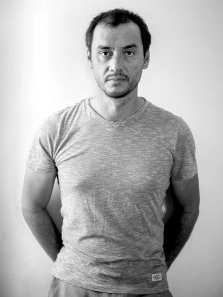
Seeing the Humanities Ph.D. through a New Lens
Leopoldo Pena, Ph.D. Candidate in Spanish & Portuguese
October 2018
I had worked independently as a photographer for many years, and in all those years photography had been only a technique—a job with a high level of creativity and higher degree of economic instability. It had never occurred to me that photography was a field of research. Around the end of the first year of graduate school, I began questioning my interests and my own status in the academic field I had chosen. At some point, my adviser caught on to my frustration and kindly suggested I take courses outside the department. The suggestion turned into a delightful surprise when I realized that I could read, research and write papers on photography. With a couple of Visual Studies courses: “U.S. Art, War and Memory” with Dr. Cécile Whiting and Directed Reading on photography with Dr. James Nisbet, my academic interests rekindled and somehow, at that point, the working photographer and the aspiring scholar became one. Graduate school began making sense again.
After several quarters and countless hours of juggling dissertation research ideas, I decided to write my thesis on photography in México during the 1920s and 1930s. Unbeknownst to me, photography led my scholarly work into different directions and my research project turned into an exploration of travel writing, journalism, anti-fascist propaganda, proletariat literature and other nationalist ideas of the early twentieth century. This research renewed my academic interests and encouraged me to apply my work outside academia.
Pursuing the idea of an academic career, I participated in the California Community College Internship Program at Orange Coast College, where I taught a course in Spanish and gained work experience at a community college. Later, I became a Humanities Out There Public Fellow with the Laguna Art Museum, and had the opportunity to organize public programing and document the construction of Seascape, an art installation by Mexican conceptual artist, Pablo Vargas Lugo. At the museum, I also facilitated a workshop by students of Art Division, an art education non-profit in Los Angeles. These experiences made me realized that I have the ability to work as practicing photographer, teacher, scholar and organizer and thus enhance the potential for doing public scholarship within in the classroom and outside it. As a result of these experiences, I have published peer-reviewed articles, I have continued to collaborate with non-profits and my photography work was exhibited at The Fowler in UCLA. Currently, I am participating in Humanizando la Departación/ Humanizing Deportation, an oral history project housed at UC Davis. I am also collaborating for INK: Stories on Skin, an exhibit at the Museum of Latin American Art in Long Beach.
Above all, my graduate school experience has allowed me to identify my strengths and passions as well as encouraged me to find alternative routes and other career paths to work as a public scholar. I am now certain that I want to teach, but also aware that the abilities developed during the course of graduate studies can be applied in many other fields. I am looking forward to a job that will allow me to learn, contribute, collaborate and educate.
